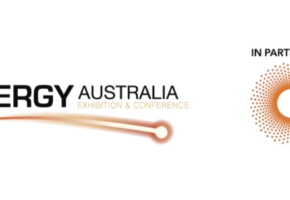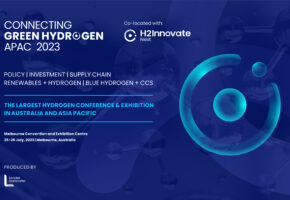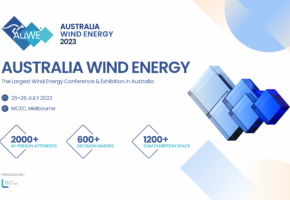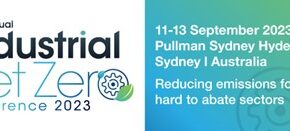Unlocking value and realising opportunity through corporate PPAs
It’s by no means controversial to suggest that corporate buyers can benefit from entering into a renewable Power Purchase Agreement.
Jon Dee (RE100), a frequent collaborating partner with the BRC-A, yesterday delivered an inspiring address to the stakeholders gathered at the BRC-A-hosted breakfast discussion on recent corporate renewable Power Purchase Agreements (cPPA) signings at the Clean Energy Council (CEC) Australian Clean Energy Summit (ACES). In it, he emphasised the increased traction in the Australian and international corporate communities committing to 100% renewable energy (and other innovative sustainability strategies), including pledges from major corporate players from CommBank to Atlassian.
PPAs enable corporations to hedge against wholesale electricity market volatility: during the discussion, Ben Waters (Presync) remarked, ‘doing nothing is high-risk; business-as-usual electricity procurement has been extremely high-risk… everyone assumes that sustainability comes at a premium… I’m here to tell you it’s cheaper and let’s talk about how to spend the savings on an additional carbon benefit.’
In addition to financial savings, there’s a growing market and moral imperative to build sustainability into everyday corporate operations. Emma Bombonato (Sydney Opera House) said that the Opera House team aspires to be ‘as bold and inspiring as the Sydney Opera House itself’, a motto that motivated them to explore cPPAs out of responsibility to the environment, extending beyond the risk hedge against wholesale electricity price volatility.
Likewise, Simon Currie (Energy Estate) championed that corporates with ‘a lot of buying power’ ought to exercise their responsibility and exploit it to realise environmental and community benefits; ‘there are so many other things you can achieve than just saying ‘Oh look, I managed to save on my energy bill!’’ Simon’s approach to adding environmental value in the Bomen Solar Farm included avoiding the use of land harbouring native habitat or prime agricultural pasture, and ‘upcycling’ the chosen area by growing particular grasses that ‘enhance the experience for sheep grazing between the panels’ and encourage ‘bee pollination and biodiversity.’
Stephen Au (Flow Power) says emerging deals anchor on the discovery of additional environmental and social benefits, since they send a signal to the corporate’s supply chain or the larger community; it’s becoming a key driver for customers.
‘The challenge is bundling lots of SDGs into the one renewable energy project!’ advised Simon. ‘That’s what leadership looks like now in the sector. The PPA is a really elegant procurement tool, don’t undersell it; it has the ability to tackle multiple objectives at once.’
Nevertheless, there persist a number of barriers to entering into a corporate Power Purchasing Agreement (cPPA). From the discussions at yesterday’s breakfast, these barriers tended to cluster around several key themes, and opportunities for action:
1. Understanding what is involved
Michael Shelley (Woolworths) and Dan Brown (Ashurst) unpacked Woolworth’s sustainability strategy, the cornerstones of which are an energy management centre, onsite photovoltaic generation, natural refrigerants and cPPAs.
Dan observed that cPPA interest has grown alongside the traditional retailer PPA, but acknowledged that it’s important to have a ‘true understanding of what it is that’s driving them on the sustainability journey’ because it’s a ‘very complex transaction that’s not very well understood by most corporates’.
Emma emphasised the need to socialise the concept with the CFO early and conduct market sounding to validate the business case and legitimise the option, a process which took several months.
2. Providing pathways for smaller corporate customers
Emma Bombonato (Sydney Opera House), Ben Waters (Presync) and Stephen Au (Flow Power) then discussed how innovative retail models have enabled smaller corporate customers to capture value from clean energy resources.
Ben exhaustively modelled potential price outcomes which helped the Opera House land on a sleeved, supply-linked cPPA contracting with both solar and wind projects through retailer Flow Power, an innovative arrangement which Ben says has been revolutionary in unlocking a single generator’s output for several unaffiliated corporates rather than forcing aggregation among smaller energy consumers (a complex but demonstrated process).
3. Demystifying the process and technical language
Michael admitted that translating energy market concepts into language accessible by the internal team was crucial, and revealed that a catalyst in the process was positive, attentive leadership in the company management.
Emma’s key takeaways from the process overlapped with Michael’s: socialise the issue early, demystify electricity industry metalanguage, and engage someone like Ben to assist in that process. Emma advised that reframing strategic and financial risks as opportunities can serve as drive to support the renewable energy sector.
4. Tailoring offerings to meet specific needs
Simon and Stephen advocate streamlining and standardising certain PPA processes while keeping customisable options open to suit different corporate segments. Co-operation between Energy Estate and Flow Power also allowed developer-side participation in an innovative cPPA wherein Flow Power’s on-selling of the generator’s output meant Energy Estate was free to effectively tailor the project’s capital structure given different available PPA terms and flexible capacity contracting. Otherwise, potential customers might risk exclusion – ‘the Sydney Opera House didn’t want a 10-year deal!’
Stephen elaborated on the proven viability and demand for flexible retail products, especially in sectors where electric loads are somewhat controllable like agriculture; ‘we see wholesale really as a conduit to accessing additional value. It takes time for customers to effectively get to the viewpoint to go away from traditional retailing processes and go onto wholesale and start accessing these value points [demand management initiatives, ARENA’s demand response program]’.
5. Understanding the co-benefits
Dan and Michael agreed that aside from the financial benefit of procuring competitively-priced renewables, the emerging symbiosis between clean energy developers and corporate buyers is now allowing, for example, Woolworths’ core business of selling ‘baked beans and bananas’ to contribute substantially to the clean energy transformation.
Emma also reiterated the need for a compelling business case, ensuring the proposition has commercial benefits but also a defining sustainability component (especially for a national icon with 10 million visits annually!).
Latest news & blogs
NEWS | 7 November, 2023





